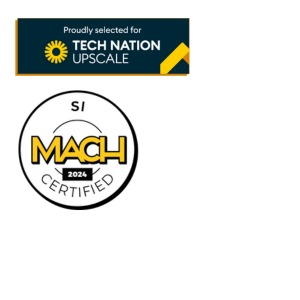1. Defining ETIM
An ETIM is a classification standard used to describe technical products. ETIMs are particularly useful in the electronics industry, where product descriptions tend to get quite complex. Essentially, this record provides a single source of truth for manufacturers. The ETIM is “supplier neutral,” making it easier for manufacturers to collect data efficiently.
A template ensures nothing is missed, appears unclear, or causes confusion. Also, a template makes it far easier to provide consistent product information so each product is represented in the same way. As a result, the model’s simplicity benefits everyone in the supply chain up to the customer.
ETIM uses six entities for product descriptions:
- Product groups
- Product classes (categories)
- Synonyms (alternative keywords)
- Features (product attributes)
- Values
- Units
Why Use ETIM?
Overall, formatting product data for use in catalogs and product descriptions takes time. ETIM takes disorganized data and creates a consistent, legible format. As a result, the model assigns a specific article class and composes relevant features into a single coherent entry.
Then, manufacturers easily share the data and can also easily update it through a single source. Consequently, sellers are spared time consuming manual processes, making manufacturers using ETIM more appealing. As a seller, they can get their products to market quickly.
2. What are the benefits of ETIM?
In essence, ETIM takes disorganized technical data and structures it into a user friendly format with straightforward descriptions. Additionally, it provides a single source for manufacturers so they easily make updates and share data to ensure their technical information remains consistent across all distributors. Most importantly, you protect the brand and create a more enjoyable experience for their customers. ETIM offers many benefits, including:
- Classes: Every product is placed into a relevant class, providing a uniform grid that structures and organizes product data. Therefore, there is clarity in product descriptions and a group structure that enables you to compare products or process them together.
- Accuracy: Having a single source for product data reduces the risk of mistakes. Simultaneously, you can save time and money across the supply chain.
- Multilingual: ETIM is multilingual with automatic translations provided in international markets. Before, language variations were quite tedious for brands to manage.
- Format friendly: Distributors can receive the information digitally or in print form.
- Consumer friendly: Wholesalers can create content that drives sales and provides consumers and sellers with better data that is accurate and easy to understand.
- Adaptability: Manufacturers and wholesalers can quickly adapt changes to ensure they remain compliant with data regulations.
- Reusable template: ETIM provides a reusable template ideal for multiple purposes. As a result, content doesn’t have to be manually duplicated.
- Analysis: Product analysis is much easier. Essentially, you can compare ‘apples to apples’ in order to prepare reliable reports with accurate statistics.
3. How does a PIM work effectively with ETIM?
As stated earlier, ETIM provides an efficient way to share product information between manufacturers and distributors. However, you still face the challenge of manual updates and adding new product data into your system.
PIM (product information management) software enables you to fully automate the process. In turn, your ETIM is easily updated with new products or new product information. A PIM enables you to:
Create a Centralized Hub for Approvals
Altogether, manual processes slow down your time to market with so many departments involved in approving product data. With a PIM, you combine the standardization of ETIM with a centralized hub for quick collaboration amongst departments. As a result, all departments work from one description, streamlining the approvals system.
All Product Information
A PIM platform holds all your SKUs enabling you to cleanse, enrich, and optimize your product data and assets. Effectively, all your information is in one place. For example, your ETIM data, pricing information, and marketing assets are all centralized in a hub. Hence, you have a ‘golden record‘ of product information.
Brand Integrity & Customer Experience
PIM enables you to maintain full control of your product data. Thus, you’re able to ensure it remains consistent across all sales channels. Undeniably, better customer experiences create brand loyalty. You can set standards for all sellers ensuring consumers have the specific information you want them to know. For example, sellers might need your sourcing, sustainability, and ethical manufacturing processes. Your PIM enables you to improve transparency through brand consistency and integrity.
While ETIM provides the ideal standard for creating product information, a PIM provides a data hub where all SKUs and their relevant information can be uploaded, stored, and edited. As a result, you eliminate time consuming manual processes and get new products to market faster.












